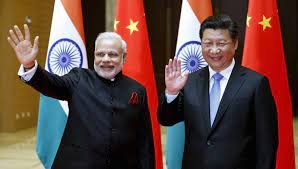ndia’s population has now surpassed China’s, marking a significant demographic shift that positions India as the world’s most populous country. This unfolding transformation has led financial analysts to explore potential investment opportunities for what could span a decades-long economic boom. Insights from renowned institutions like Goldman Sachs, Neuberger Berman, Matthews Asia, and others shed light on the divergent investment prospects offered by India and China.


Goldman Sachs Group Inc. envisions India’s share of the global equity market quadrupling by 2075, potentially reaching 12%, in alignment with China’s anticipated share. While China currently holds the position of the world’s second-largest economy, boasting a robust consumer market and advanced manufacturing, India presents a younger workforce and favorable relations with the West. The projected economic growth of India, anticipated at 6% to 7% annually, is expected to outpace China’s. This is fueled by a burgeoning middle class experiencing expanding disposable income.
Expert opinions diverge on the allocation of investments. Neuberger Berman’s Conrad Saldanha identifies India as a compelling contender for manufacturing alternatives to China. Conversely, Hugues Rialan, CIO for Asia at Pictet Wealth Management, underscores China’s current economic momentum and low equity valuations as advantageous elements.
Mark Mobius, a Partner at Mobius Capital Partners, places emphasis on India’s tech and digitization sectors, favoring companies like APL Apollo Tubes Ltd. and Metropolis Healthcare Ltd. Matthews Asia’s Michael Oh suggests banking prospects in India, highlighting the growth potential of ICICI Bank Ltd. He also pinpoints promising Chinese candidates, including KE Holdings Inc. and Trip.com Group Ltd.
Goldman Sachs Asset Management’s Hiren Dasani highlights India’s promising trifecta of scale, growth, and profitability. Ayaz Ebrahim of JPMorgan Asset Management leans towards China due to valuations, particularly favoring the theme of industrial upgrades and technological advancements. In India, Ebrahim sees potential in private banks, insurers, and the consumer sector.
HSBC Asset Management’s Cecilia Chan points to India’s real estate and financial sectors as promising domains. As China’s population ages, technological enhancements to quality of life, encompassing communication services, IT, and industrials, emerge as significant investment avenues.
Jupiter Asset Management’s Jason Pidcock lauds India’s youthful demographic as a catalyst for growth, especially within the consumer, financials, and utilities sectors. However, Pidcock voices reservations about mainland Chinese investments in light of escalating geopolitical tensions.
In this evolving landscape, experts encourage judicious and discerning investment decisions, while contemplating the distinctive growth trajectories, demographics, and geopolitical elements that will shape India and China as formidable economic forces.

 Business
Business




